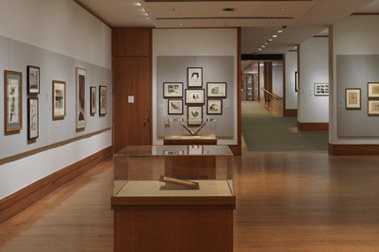The Hedgerow
Sir Francis Seymour Haden British
Not on view
Seymour Haden was the unlikely combination of a surgeon and an etcher. Although he pursued a very successful medical career, he is mostly remembered for his etched work as well as for his writings on etching. He was one of a group of artists, including James McNeill Whistler (1834–1903) and Alphonse Legros (1837–1911), whose passionate interest in the medium led to the so-called etching revival, a period that lasted well into the twentieth century. The extolling of etching for its inherent spontaneous qualities reached its pinnacle during this time. While the line of the etching needle, Haden wrote, was "free, expressive, full of vivacity," that of the burin was "cold, constrained, uninteresting," and "without identity."
Trees and hedges in middleground, at center and right, continuing into distance, seperating two fields.
"Drawn during a lecture at the Royal Institution (see Nos 189, 191) to illustrate the process of drypointing.
State II (H1). The sheep and the dog in the foreground removed."
[Source: Schneiderman, p. 361]
"Published State: First.-The sheep and dog in the foreground have been removed. There is a photo-engraved reproduction of this plate, size 6 3/8 w., 4 1/8 in. h. Done, during a lecture at the Royal Institution, for the purpose of illustrating the process of 'dry-pointing.'
[Source: Harrington, p. 102]
